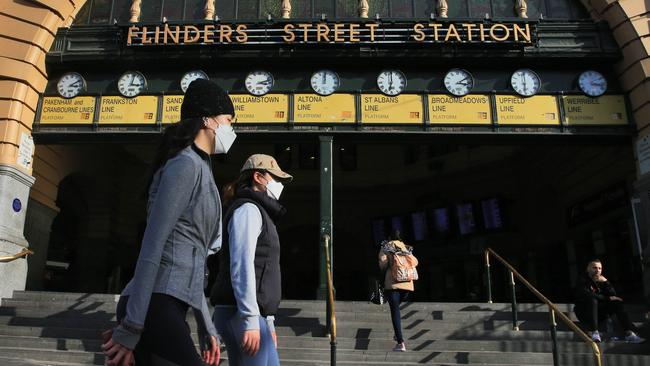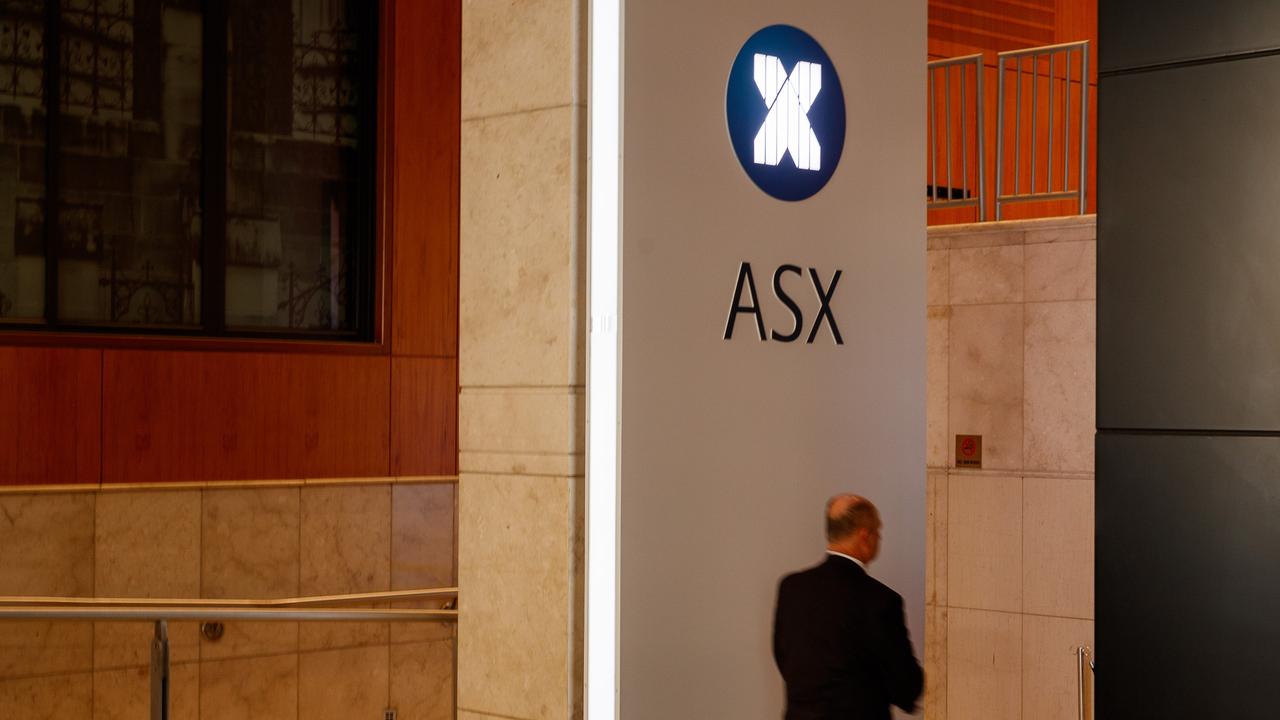Melbourne stranded in lockdown
The excesses of the coronavirus might be localised, but its economic impact will be felt nationwide.

In Sydney, which historians might recall was a 90-minute flight from locked-down Melbourne, ANZ deputy chief executive Alexis George roams freely as NSW Premier Gladys Berejiklian eagerly peels off the state’s pandemic restrictions.
Four months have passed since George boarded her weekly southbound shuttle to ANZ’s head office.
In the wrenching transformation of the nation’s working life brought on by COVID-19, she is arguably less worse off than any of her colleagues; indeed, her family could be seen as a beneficiary.
“Try telling my husband that,” she laughs, in an interview with The Weekend Australian.
Victoria’s isolation from the rest of Australia was confirmed last Tuesday, when Premier Daniel Andrews locked the state down for six weeks and closed the NSW border after a second wave of the dreaded coronavirus.
The excesses of the virus might be localised, but its economic impact will be felt nationwide.
In 2019, the nation’s second-biggest city accounted for 20 per cent of Australia’s gross domestic product and an equal share of its population.
Its contribution to economic growth, however, was a disproportionate 40 per cent.
The state’s economic ascendancy — mainly driven by a heavy program of infrastructure investment — was a heavily marketed electoral asset for Andrews.
Now it’s about to disappear in a puff of the city’s virus-infected air.
On Friday, Victoria announced 288 new COVID-19 cases — the biggest national spike since the pandemic began.
Billions written off
Treasurer Tim Pallas said hours earlier that “literally billions of dollars (would be) written off the expected size of the economy”, and it would take two to three years for state output to return to where it was expected to be at the end of 2020.
“The reason for that, of course, is businesses are not capable of operating in the way they would like and that’s a consequence of our social distancing rules,” Pallas said.
“This event will have a devastating impact on our community and thousands of Victorian businesses.”
Gross state product for the June quarter, he said, would close 14 per cent below previous estimates, with unemployment expected to peak at 11 per cent, up from its current level of 6.9 per cent.
The Treasurer said that several weeks ago, he had been more confident that Victoria would exceed his department’s “conservative” economic forecasts.
That optimism had now faded, with the original estimates reinstated as the likely outcome.
UBS said in a report, also on Friday, that the return of mobility restrictions in Melbourne was a clear risk to recovery prospects in the September quarter.
Given Victoria’s 20 per cent share of the nation’s GDP, the investment bank said a six-week lockdown that lowered activity by 10 per cent could slash $1bn a week — a total of $6bn — from GDP.
The cost to September quarter GDP would be about 1 percentage point.
The starkest illustration of the tumultuous change in Melbourne workplaces was National Australia Bank’s decision to mothball two of its signature CBD office towers at 700 Bourke Street and 800 Bourke Street.
Staff who have chosen to remain at work, including chief executive Ross McEwan, have relocated to a third tower at 500 Bourke Street.
Pre-COVID, the three Bourke Street buildings could accommodate close to 17,000 people, but social distancing requirements have slashed about 80 per cent of their normal capacity.
Barely 7 per cent of the bank’s Melbourne workforce has been working from the office in recent months — a period beginning well before the second lockdown.
Work changed forever
Even if a completely successful COVID-19 vaccine were announced over the weekend, NAB group executive people and culture Susan Ferrier says it’s extremely unlikely that anything resembling the old working environment would be restored.
“The change will be substantial; it won’t be just at the margin, even if a vaccine appears,” she says.
“The world of work has forever changed and we’d like to retain a lot of the positive changes, like the flexibility of doing work from where it suits you.
“Most of our people say they want some element of flexibility for their wellbeing, or to avoid very long commutes to work, but there are others who miss the camaraderie and companionship they experience from being physically at work.”
George, who oversees ANZ’s business continuity program, says the bank has not been encouraging staff to return to work in Victoria or NSW.
Numbers, however, were starting to creep up, although Andrews’ announcement of the second lockdown on Tuesday quickly reversed that trend, even before the measures became effective.
ANZ employs 45,000 people, mostly in Australia and New Zealand but in 31 other countries as well.
No one, according to George, has contracted COVID-19 at work, and there have not been any mass exits from ANZ buildings around the world.
While some workers have caught the virus at home, George declines to specify a number and says all of them are recovering well.
At the virus’s peak, she says 95 per cent of staff were working from home.
The current figure is 85 per cent after NZ reopened its economy — but not its borders — last month.
Empty offices
There are gaping chasms of empty space at ANZ’s head office at 833 Collins Street in Docklands, although chief executive Shayne Elliott and institutional boss Mark Whelan are doing their best to boost the numbers.
Whelan shifted from the 10th floor to the now-vacant trading floor to enable an office consolidation, and to keep him in touch with rapidly unfolding global events.
While he and Elliott are the only two members from the leadership team working from the office rather than home, George says she and the others attend “from time to time” even if it’s by video.
“It’s important to keep everyone safe and it sends the right message to staff,” she says.
Scott Charlton, chief executive of toll-road company Transurban, faces similar challenges to George, as the Sydney-based CEO of a company located in Melbourne.
Like George, he’s based himself in Sydney since March, and is now alternating between working from home and the office as restrictions ease in NSW.
Transurban has executives in Melbourne, Sydney, Brisbane and Washington.
“Our executives, like everyone else, are managing the challenges of balancing work and home-life responsibilities, and haven’t shied away from that,” a spokeswoman says.
“It can show up often in unintentional and entertaining ways — whether it’s kids interrupting meetings to ask for help with homework, or being quizzed by your team about your choice of floral curtains.”
About 95 per cent of Transurban’s 3000-strong workforce, 900 of whom are in Melbourne, transitioned to working from home in March, with 5 per cent continuing to work from traffic control rooms and incident response hubs to keep traffic moving safely.
Some staff in Brisbane and Sydney have recently returned to work, voluntarily, as restrictions in those states have eased.
At Telstra, the Victorian restrictions have trapped chief executive Andy Penn in Melbourne, unable to travel to the telco’s second home in Sydney.
The spread of COVID-19 has also impacted the company’s ability to operate a global workforce.
In a speech to a virtual business lunch on Thursday, Penn said the virus had hit India and The Philippines hard, with both yet to fully recover from going offline due to strict lockdowns.
“While we have managed to move a large amount of this work online and to Australia, we are very conscious of the impact it has had and is still having on some of our customers in trying to contact us — some of you in the audience today may have been affected,” the Telstra boss said.
The big question for large corporations is how the dramatic transformation of their workplaces affects productivity.
Having frantically transitioned most of their staff to remote ways of working, companies like NAB are only beginning to assess the impact on productivity.
Ferrier says the bank is undertaking “pulse” surveys of staff to see what they think, with about 40 per cent believing they are, in fact, more productive.
Greater flexibility leads to improved productivity, according to this group. “We’ve looked at things like how people are using calendars and the meetings they attend, and people working in and out of email,” Ferrier says.
“There’s no doubt people are working hard, but all hands are on deck to support our customers.”
There are fewer desks in a COVID-19 environment. And even fewer feet resting on them.





